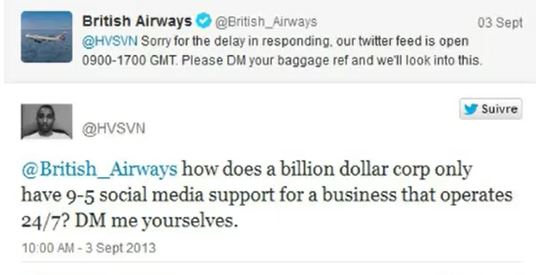Online Reputation Management. Have these 3 words ever come up within the walls of your work place?
Probably not. You may think that an internet reputation strategy is something only big corporations need worry about.
Well…. you would be wrong!
Let’s face it, in today’s world there really is no distinction between protecting your reputation and your online reputation. Everyone is online in some way or another.
It is therefore only logical that online reputation management should be considered by everyone, from the small family businesses around the corner to the larger multinational corporations. In fact, anyone who wishes to protect their brand and their image from all hearsay found on the world wide web.
However, before we get into the ‘how’, we have to understand the ‘what’ and the ‘why’. So let’s dive right into it.
What is Online Reputation Management
Your online reputation management is one of the most valuable assets of your business. It’s what people find and see about your brand on the web, and as expected it heavily shapes their impression of you.
So it should be no surprise that your internet reputation should be managed properly. This is where online reputation management comes in.
As a simple definition, Online Reputation Management is the process of measuring and altering the internet’s perception of a brand for the benefits of your company.
Pretty straight forward, right; but what does this involve?
In essence, ORM requires you to monitor what is being said about your business on the web and respond appropriately in order to build confidence in your product or service.
In today’s competitive marketing environment, however, just managing your online reputation is not enough. Your competitors might be taking a more active role in developing their online brand reputation so as to engage new customers.
Social Media has shifted the Marketing Power Game
 You will remember a time when brands used to advertise and sell to a relatively passive audience where communication came from promoters to the public and there was little interaction the other way around.
You will remember a time when brands used to advertise and sell to a relatively passive audience where communication came from promoters to the public and there was little interaction the other way around.
Well, marketing messages are not that easy to control anymore. Those days are long gone and Social media has shifted the power from the businesses to the consumer.
As you might expect, therefore, Social Media plays a pivotal role in any Online Reputation Strategy. Platforms like
Face Book, Twitter, YouTube and Instagram allow people to interact, create and share information and ideas about anything under the sun, including your brand.
Two aspects of social media are pivotal to understand when addressing your internet reputation;
- Interaction: Unlike traditional marketing, social media marketing is a 2-way street, therefore we need to make sure that we are involved in the conversation and that we are saying the right things. This is managing our online reputation.
- Community: We need to create a community around us with which we engage and add value so that the community sees us as an authority. This is where we develop our online brand reputation.
Why bother with ORM. What’s the worst that can happen?
I’m just going to come out and state it. The consequences of doing nothing can be catastrophic!
Yes, really.
It’s quite simple actually. If you don’t control your brand online, then someone else will. This exposes you to uncontrolled negative online reputation.
The public’s opinion about your products can easily be expressed, shared and go viral. There’s no way to run away from this, however, you can take measures to control it.
Negative review sites such as ripoffreport.com, in which users can express their opinion on your brand, are a very powerful platform to fuel negative online reputation for your business. These sites tend to rank quite easily on Google search results, which means that the criticism about your brand will be exposed to large audiences.
The outcome of this bad press may be as small as having a potential customer clicking on a competitor’s search result instead of yours or as intense as an industry-wide boycott of your brand.
Apart from the financial implications of negative internet reputation you need to consider also the time and resources you will have to sacrifice to address the situation.
Since this is the internet we are talking about, you can rest assured that the outcome of any bad publicity will continue to come up in search results for years after you remedy the situation.
To drive this point home let’s look at a real life example.
If you’re a fan of reality TV, maybe you’ve heard of Amy’s Baking Company. This was the company behind a coffee shop that was featured on the Chef Gordon Ramsay’s popular TV show, Kitchen Nightmares.
The coffee shop was owned by a married couple, whose behaviour on the show was so terrible that Chef Ramsay had to walk off the episode for the the first time in his career.

Following the airing of the show, the public got on social media and started expressing outrage and ridicule at the couple and their business. Negative comments about the restaurateurs also appeared on Reddit and Yelp.
There were various ways how the owners could have handled the situation however their lack of any ORM awareness (coupled with their lack of common decent behaviour) led them down the social insult route.
The couple went against the public on social media and actually posted offensive comments and abuse. As a consequence, the bad feedback from the public kept growing and went viral.
As you can expect did this not end well, in fact they went out of business very fast shortly after.
There are various other situations of companies missing the mark when it comes to social media posting. Check out some of other social media disasters.
How To Get Started With Online Reputation Management
A good online reputation repair system can mean the difference between a dissatisfied customer setting off a viral wave of bad publicity or spinning a bad situation into a positive PR exercise for your brand.
Without the knowledge and proper online reputation management techniques, however this process can be a very frustrating, time consuming and costly exercise.
Do not despair yet.
If you want to get your internet reputation strategy on the right track, start by looking into these 7 processes.
1. Build a Competent Online Reputation Team

First off you need to Build capacity within your organisation and have the right people handling this function.
ORM is a two-way conversation, which means our customers are engaging with us continuously, therefore, the person or team taking on your internet reputation management must understand your product and have some background in customer service.
Having an appreciation of the customer’s perspective is key when posting on social media.
In fact the Golden Rule of Online Reputation Management is quite simply to treat your customers how you would want to be treated yourself.
So, exercise empathy and restrain before posting or replying to complaints. Remember that everything you put out there will make it in the public view and will have a digital time stamp, which means that you will not be able to get it back.
2. Develop a Stronger Online Presence by Blogging
When you need to have an online space where you write long form content you will need a blog. Blogging is actually one of the best online reputation management tools.
There are various online resources out there where you can find guides to creating a blog, and it is not our intention to go into detail on this here. We do, however, have the following tips, in order to make the most out of your blog from an ORM perspective.
- Publish high-quality content on your site as this will allow your site to rank better.
- Update your page regularly with new content.
- Make sure you are regularly present on your site to reply to blog comments from readers.
- Register with local business directories like Yelp and Crunchbase.
- Optimise your blog’s SEO to enable your site to get to the top positions in search engine results.
 Your aim is to get your blog posts at the top of search engine results. Think of Google’s First Page as your online business card.
Your aim is to get your blog posts at the top of search engine results. Think of Google’s First Page as your online business card.
When consumers search for information about you or your brand you want them to find relevant and positive results. If Google’s results are crowded with indifferent sites or worst yet negative statements then the user isn’t finding something that will compel them to buy.
So you need to control as much as possible what is appearing on the first few pages of Google’s search results when someone searches for your brand.
Which sources are talking about you on the internet and what are they saying?
If it’s mostly negative, then your online reputation management strategy will be to push the positive comments and pages to the top spots of the search results. This is where Search Engine Optimization comes into play, and since SEO can get quite technical and complicated you should consider getting professional help for this.
3. Maximise your social media presence
Open a Facebook account, LinkedIn, YouTube or any other social media account you can reasonably maintain. Do not open social accounts just for the sake of it however.
Managing different social platforms requires considerable time commitment so only open accounts for which you have the capacity to manage and build up. Better to open one and maintain it well than be present on 5 different social media which are rarely updated.

It goes without saying however, unless you’re a celebrity, you should not use your personal account to promote your business. Create a separate business account instead. This is free anyway.
Now the golden rule for social media is to post regularly and maintain relevant and updated content to gain followers and entice shares. So you should try and understand what messages will trend, what type of posts will get people motivated to share and view your brand in a good light.
Let’s take a quick look at the main social media platforms available and when to use them.
Facebook is the most popular one out there with the maximum number of followers. If you have to open just one account probably Facebook is the one, especially since you can share various types of information, like blog posts, images and videos. It is also very easy to communicate with your audience on Facebook.
LinkedIn is easier in terms of maintenance compared to other social media. It is a more professional type network and would be ideal, for example to find potential candidates to work for your company and also for setting up your Company’s professional reputation.
YouTube is excellent to show off your products to potential customers with detailed walk-troughs of the product features. Posting on YouTube is probably the most time-consuming and difficult of all social platforms as you need to ensure you have high quality videos. This makes it a big financial and time investment.
Pinterest and Instagram are image based social platforms and therefore ideal for sharing photos with your audience and also short videos. These platforms are good for connecting with your most passionate customers and sharing photos of new products in stock, for example.
Location based social media are good for brick and mortar businesses. To put yourself on the map and be found easily, platforms like Yelp, TripAdvisor and Foursquare are ideal resources.
Manage Your Social Accounts Intelligently
Now managing various social platforms can be quite daunting however if you have the appropriate tools these can make things much easier. Two such helpful programmes are Hootsuite and Trackur.
HootSuite lets you manage your entire social media presence conveniently from one place. Schedule posts, get detailed analytics to measure the performance of your campaigns and also share tasks with other team members.
Trackur monitors the main social media sites and forums. It allows you to audit keyword searches, and determines their ratings and their influence. It also provides a handy mobile dashboard showing the key performance indicators in one place.
Hashtags – Make sure you know what they’re all about
Trending hashtags can be a great source of exposure on social media platforms like twitter and instagram. Many marketers jump on this bandwagon to get new followers and brand recognition, however you have to make sure to research the hashtag and address it appropriately.
The popular clothing brand GAP, for example, did a very poor job at this during Hurricane Sandy. With people dying and several losing their homes Gap sent out a very insensitive tweet.

It eventually took it down and apologized, but the the brand reputation damage had already been done.
4. Protect Your Name
It would be a good idea to register your brand name with various social accounts (even if you don’t actually create a profile on each social platform).  There are two reasons for this.
There are two reasons for this.
Firstly, you would already own the name in case you decide to start engaging on the platform in the future. When any of the social networks don’t have your name available this can cause a disruption in your marketing strategy.
Secondly, you avoid your brand name from getting taken up by other users. This is more common that you might think.
Your brand username can be taken up by other individuals either in order to make a quick buck from you for the rights to the name; by an affiliate to promote the product, or worst yet, by an angry customer or competitor with the intention to damage your brand name.
A useful tool to keep track of the social networks and register your username on each is KnowEm which lets you build various profiles on a number of different social networks.
5. Monitor what they are saying about you
 When people are frustrated or disappointed they naturally look for a source to vent their anger. That’s why so many angry customers take to Twitter and Facebook to rant about everything, from lost luggage to faulty products.
When people are frustrated or disappointed they naturally look for a source to vent their anger. That’s why so many angry customers take to Twitter and Facebook to rant about everything, from lost luggage to faulty products.
In order to keep on top of this, you will need to be constantly monitoring your brand for any social media mentions, so that you can address any issues before they spiral out of control.
Addressing a customer complaint with a prompt statement is better than a late reply with more information. Respond with a simple statement like “We are aware of the problem and we’re working on it. We will get back to you as soon as possible”.
Even large companies with all their resources can find it overwhelming to stay on top of things 24/7. A good example of this would be British Airways Twitter account mishap.
Following a bad flight with British Airways, one customer took to Twitter to complain about his poor experience and lost luggage. Nothing new here; however when BA did not address his tweet he took the matter a step further. He used Twitter’s paid service to promote his Tweeted complaint to BA’s followers. That’s 406,000 followers.
British Airways failed here because it did not address this customer complaint in time. It was damaging to them because the tweet came out and got interaction before they could even address it.
In fact, it took BA over 8 hours even to respond to the promoted Tweets. This was because BA did not have a 24/7 social media presence and the tweet came outside of the office hours. A brand as large as British Airways should obviously have 24-hour online customer care representation.

The consequences of doing nothing can be disastrous. Having a well-trained and reactive customer service department would have prevented all this negative publicity from the start.
The larger you grow your presence online, however, the more there is to keep track of and you can find that monitoring can be quite overwhelming and time consuming. Fortunately, there are various tools that can help you with this task.
Google Search
A simple and free tool for monitoring your brand online is google search. Search engines are often overlooked as a way to find mentions of your company or its products.
Google Alerts and Yahoo Alerts
Set up Google Alerts for your brand name, company name and any other common variations associated with your company. Google/Yahoo will monitor the web for any new content that may pop up related to you and send you automatic daily emails.
Social Mention
This is another useful tool for monitoring which focuses more on social media platforms. Social Mention offers real-time social media search and analysis, thus helping you catch immediate conversations around a specific keyword. You can subscribe to the feed, get email alerts and even download the results in Excel file.
6. Encourage positive reviews and Promote them
Build the Credibility of your brand by leveraging testimonials. Testimonials can be collected directly from clients or picked up from social media sites and reposted on your company website.
 Customers will easily get on social media to complain and criticise but they will rarely take time to make a positive review unless you prompt them. You therefore have to make it easy for them to post online reviews that throw a positive light on your brand reputation.
Customers will easily get on social media to complain and criticise but they will rarely take time to make a positive review unless you prompt them. You therefore have to make it easy for them to post online reviews that throw a positive light on your brand reputation.
The statistics presented by this Local Consumer Review Survey clearly outlines the impact that online reviews have with consumers nowadays.
To collect reviews from customers you need to provide them with a quick and easy method for them to leave comments or reviews. It is very important that your website clearly displays your company contact details and different options to contact you. Also, make sure that the review function is easily accessible on your website.
Encourage them by directing your customers to a place where they can leave reviews. E-mail them after an order has been shipped, for example, with a link to the review page. You may also try to encourage feedback through incentives.
Take every opportunity to ask your customers to leave reviews both on your own blog page as well as other important third party websites within your industry. Linking to other website feedback is also an important SEO strategy since this will signal to google to rank those reviews even higher up in the search results.
Building a record of positive reviews and promoting them will give potential customers confidence in your brand and encourages them to shop with you instead of your competitors.
This is even more essential if you’re the new kid on the block. Try and get a few reviews under your belt as early as possible to start building trust in your brand.
7. Deal with negative reviews appropriately
 We know. It hurts to read poor reviews about your product or services, but these can be an invaluable source of information to learn more about your audience and help you improve your brand or your message. Therefore be open to criticism and feedback.
We know. It hurts to read poor reviews about your product or services, but these can be an invaluable source of information to learn more about your audience and help you improve your brand or your message. Therefore be open to criticism and feedback.
Bad comments should not be deleted, especially if they are true, but they should be addressed and solved.
If negative content is up on another site and the claims are false then you need to contact the webmaster of that site and ask for it to be remove or edited. In this case be prepared to supply documents or proof to support your claim that they are reporting false information.
If the comment is true, then you have to present your side of the story honestly and authentically and take steps to correct the situation.
Whatever you do, never attack people on social platforms and make sure you are calm and composed before replying to any bad comments.
Let’s take a look at how a big brand, like Nike handled a negative situation to come out on top.
O n St Patrick ’s Day of 2012 Nike launched a pair of running shoes as a salute to the Irish. The company dubbed these runners as The Black & Tans. However, what they didn’t realise, at the time was that this name has a very bad connotation to the Irish.
n St Patrick ’s Day of 2012 Nike launched a pair of running shoes as a salute to the Irish. The company dubbed these runners as The Black & Tans. However, what they didn’t realise, at the time was that this name has a very bad connotation to the Irish.
The Black & Tans where British paramilitary troops sent to pacify the growing Rebellion in Ireland during the 1920s.
This marketing idea therefore backfired badly and it was apparent that someone at Nike did not do their research very well. However, their online reputation management team did a brilliant job to repair the situation.
First off, Nike came straight out and apologised. They then shelved the running shoes and those that were already produced where given to charity.
These actions by Nike were essential for them to turn a bad situation into a good marketing spin and Nike actually came out on top of this situation.
With all the sources available for people to vent their frustration, it can be difficult to know if you’re the subject of any online rants or damaging internet reputation reviews. This is why a tool like Complaint Search Box can come in handy.
Complaint Search Box performs a specialised search on over 40 complaint websites. You can therefore perform a quick daily search to find if customers are posting any negative comments about your brand. This will allow you to address them in a timely manner.
Start planning for the future of your brand reputation
So, is your business set-up for proper online reputation management?
If not, you should consider where to begin. Start by finding the right persons to run your Online Reputation Management strategy and get them to set up your business blog and social media accounts. Make your brand available online to address customer complaints and negative comments as fast as possible and highlight the positive feedback.
Dealing with online reputation management is essential within any business because you need to be out there to safeguard your brand name when it is being tarnished.
Online Reputation Management, however is not just about reputation repair. It is also about positioning your company as an authority in your space in order to drive the online conversation positively around your brand.
The following infographic prepared by MDG Advertising brilliantly incorporates the most essential aspects of Online Reputation Management in one poster.
Do you need more information?
Would you like to know how we can help you monitor your brand reputation?
We are eager to help you achieve a better online presence. We are based in Malta but with a Worldwide reach!
![Have You Seen Your Online Reputation? [Infographic] Have You Seen Your Online Reputation? [Infographic]](https://www.thewebally.com/wp-content/uploads/2020/12/online_reputation_1000.png)